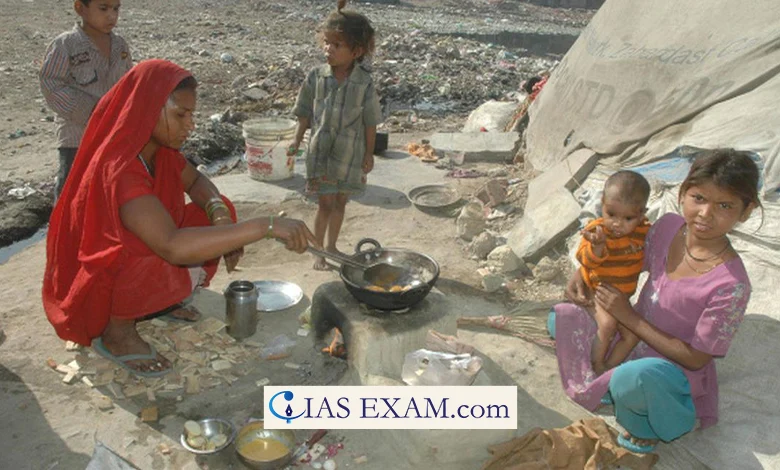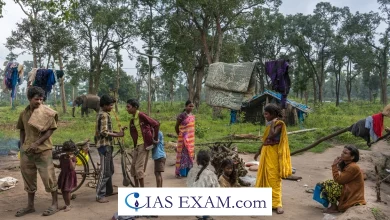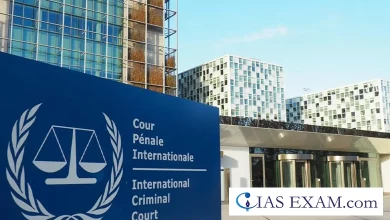Declining Poverty Ratio
Syllabus: Poverty & Development Issues [GS Paper-1]

Context
Poverty in India has been a serious problem for a long time, however, the country has made a lot of efforts to cut down on poverty in the last few years. The new release of the Household Consumption Expenditure Survey of the National Sample Survey Office (NSSO) for the year 2022-23 has stirred the debates among the researchers, mainly on the subjects of poverty and inequality in India.
NSSO’s Data Collection Methods
- The NSSO has used different reference periods for data collection, such as the uniform reference period (URP), mixed reference period (MRP), and modified mixed reference period (MMRP).
- These alterations are designed to enhance the accuracy and the reliability of the data on the consumption of households which are reported.
Decline in Poverty Ratio
- Different committees have affirmed that the poverty rates have been considerably reduced in recent years.
- The Rangarajan Committee has been able to show a reduction in the poverty ratios from 29% to 14%. Besides, the demand for the EV sector is anticipated to increase from 5% in the period of 2011-12 to 10% in the period of 2022-23.
- To illustrate, the Tendulkar Committee’s measures propose that the number of deaths will be cut down to less than 21. On the other hand, the car crash rates in the developed countries had fallen from 9% to 3% which also shows a decrease in car crashes from 9% to 3%.
- These reduction in poverty rates are proof that the endeavours to get rid of poverty are working.
Reasons for Decline in Poverty Ratio
- India has changed over the last few decades. The economy has been developed and so the income per capita has been raised and also the poverty levels have been reduced.
- The government programs, such as the NREGA, PMJDY, and Ayushman Bharat Yojana, have promoted the growth which is the main focus to reduce poverty.
- Moreover, there has been a rise in the agricultural productivity, which, in return, has been the cause of the increase in the income of the farmers and hence finally the poverty rates have been the fall.
- Urbanisation has also been the cause of the lessening of poverty, because rural people are moving to cities in search of better job opportunities.
Poverty Ratio Across States
- The difference in the levels of poverty rates among different states in India is really visible.
- According to the research data from the NSSO, Bihar, Jharkhand, and Uttar Pradesh have the highest poverty ratios at 34. The percentages of the students who got a score of 6%, 32, and 30 are 4%, 6%, and 32% respectively. 4%, respectively. On the other hand, Kerala, Tamil Nadu, and Andhra Pradesh have the lowest poverty ratios at 7. 4%, 8, and 10%. 2%, respectively.
Poverty Ratio Across Social Groups
- Poverty ratio in India is very different among different social groups, which is shown by the data from the NSSO.
- In particular, the poverty rate is most conspicuous among Scheduled Tribes (STs) at 30%. 1%, with the Scheduled Castes (SCs) coming right after them at 25%. 5%.
- On the other hand, the poverty rate is the lowest among the OBCs at 14. 7% is the figure of smoke and the people in the general population at 12%. 2%.
- This difference of the wealth and resource allocation among the social groups in the country shows that there is an unequal distribution of wealth and resources among the social groups in the country.
Challenges Ahead
- Inequality: Even though poverty is decreasing, income inequality is still a worrying issue.
- Regional disparities: Poverty rates vary from states to regions.
- Climate change: Environmental pollution and global warming pose the main problem to the realisation of sustainable development.
Conclusion
Thus, the drop in the poverty ratio in India is an ongoing process, and it is likely to continue in the future. Government’s projects, economic growth, production rise in agriculture, and urbanisation are the factors that have brought the poverty ratio down. Nevertheless, there are still a lot of obstacles to be overcome, and the government should keep on its way of combating poverty and making sure that the riches of economic growth are given to all.
Source: The Hindu
UPSC Mains Practice Question
Q. Discuss the factors contributing to the declining poverty ratio in India. Evaluate the effectiveness of governmental policies versus socio-economic trends in addressing poverty alleviation.





.png)



